Understanding a dog is quite a skill to master. In fact, there is a whole study dedicated to interpreting animal behavior, and it’s called Ethology.
Experienced animal ethologists had been studying canine behavior for years until they noticed that there are some similar patterns in a dog’s behavior.
You don’t have to be a professional canine ethologist to know how your dog is feeling today. Most dog owners understand their dog’s mood through simple body postures and movements, especially through the dog’s tail.
A dog’s tail is one of the main indicators of a dog’s mood.
Whenever a pooch is feeling a certain way, its emotions are shown through its tail position and tail wagging.
Of course, a dog’s tail is not the only body part that plays a role in communication. But, it is one of the most important body parts when it comes to understanding a dog’s mood.
In this article, we are going to go through the basic dog tail positions as well as other behavioral signs to look out for.
This simple dog tail position chart will help both future and current dog owners to understand their pooch better. By the end of this interesting read, you will be able to differentiate a happy tail from a worried tail.
So, let’s get our tails wagging!
Dog Tail Position Chart – An Overview
Before we dive into the depth of the dog tail position chart, here’s an overview of different dog tail positions and what they mean.
Each dog tail position is followed by tail movements. Slow or fast tail wagging tells a lot about a dog’s current mood.
[table id=390 /]
When we write them all down, some of these tail positions have similar meanings. In reality, a dog’s tail position shows a broad spectrum of dog feelings, along with other body parts, such as the ears and the eyes.
Let’s explain each dog tail position and what it actually means.
Dog Tail Positions Explained
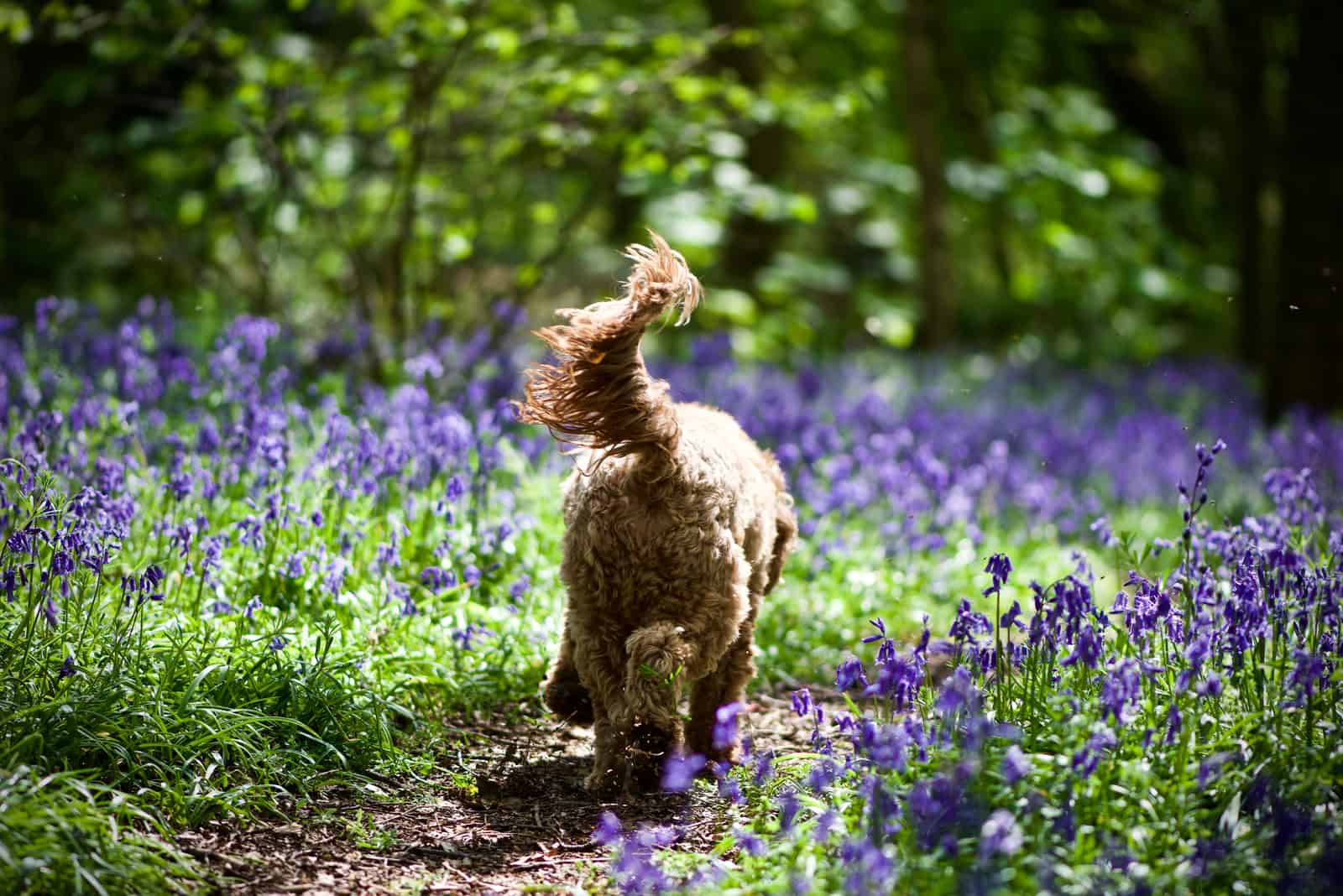
Dogs can’t talk, right? Well, I’m pretty sure I heard some Huskies talking absolute gibberish the other day. Siberian Husky howling is one of the main ways of their communication.
However, vocalization in the canine world isn’t as important as body language.
Researchers have found out that over 93% of overall communication is through body language. In other words, non-verbal communication is the most common form of communication in nature. Believe it or not, this goes for we humans as well!
Usually, dog tail positions are followed by tail movements. When we’re observing our dog’s body language, we should never pay attention to only its tail.
A dog’s tail is just a part of the whole signal it wants you to understand. So, when you’re looking at a dog, pay close attention to its whole body. Alongside tail wagging, the dog’s eyes, ears, head positions, and overall body stance speak a lot more than we think.
Here’s what’s up with dog tail positions!
Lower Tail
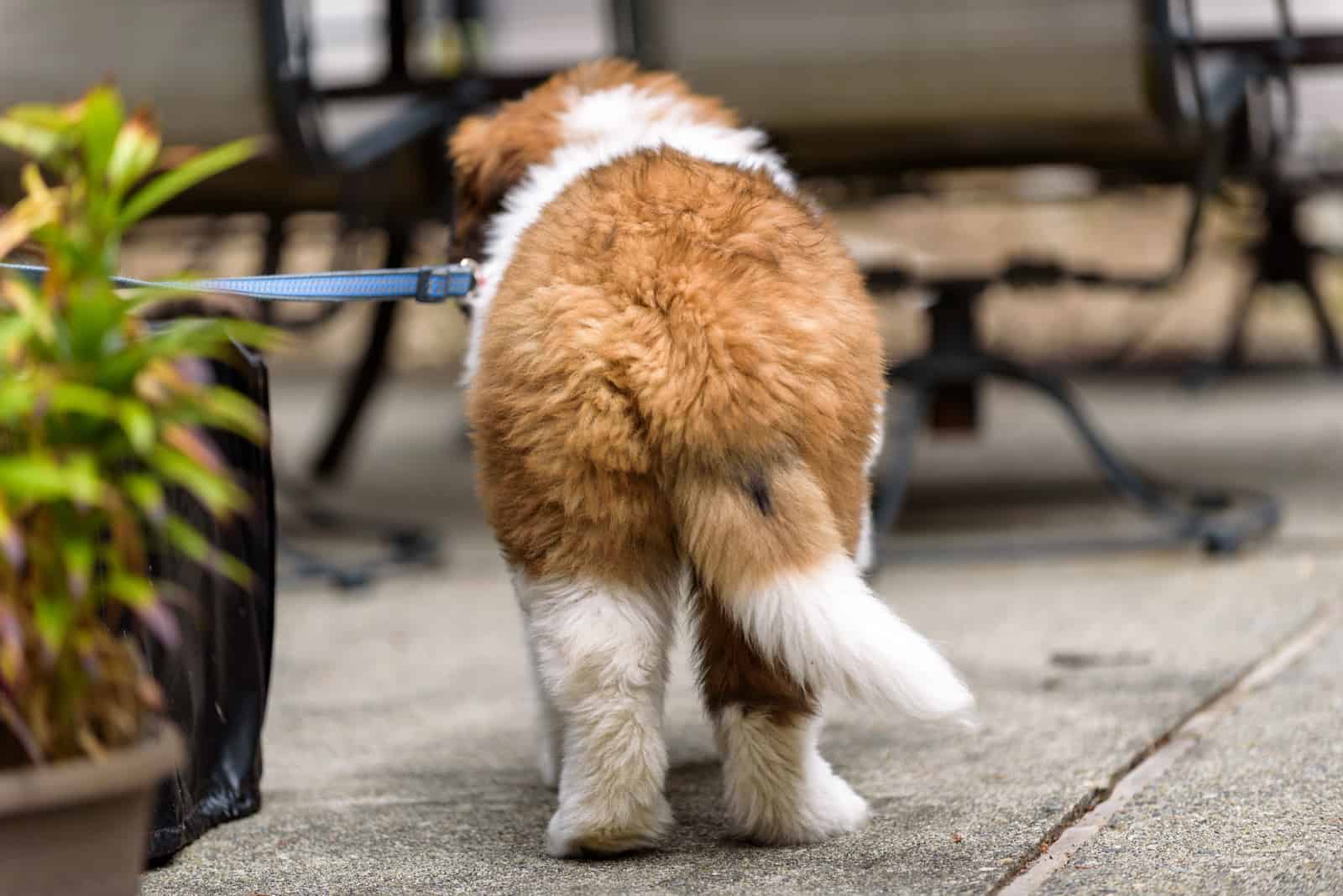
Let’s start from the lowest point. It’s convenient that I said it this way because a dog’s tail in lower positions usually means that the pooch is feeling low.
You know how when you’re feeling under the weather, people usually say, “Turn that frown upside down”, or “Keep your head up”. Well, that’s what you’d say to a dog when you see that its tail is in a lower position.
So, why is my dog’s tail down and curved?”
A dog’s tail can stay low on the ground, but it doesn’t necessarily mean something is wrong. A low and relaxed tail position indicates that your dog is just chilling, minding its own business.
However, a stiff, lower tail or a curved tail towards the body indicates the complete opposite.
A lower tail position in dogs shows submissive behavior. To understand this tail position, we have to point out a few interactions:
When two dogs meet, one might have its tail lowered down. What this dog is trying to say is, “Hey, I don’t mean any harm, we’re cool!” It isn’t exactly excited about meeting the other dog, but it isn’t annoyed with it either.
In this situation, the dog with the lowered tail is submissive and probably won’t take any action.
What Does A Tail Tucked Under Mean?
Sometimes, a lowered tail can be tucked between the dog’s hind legs. A tucked tail in a dog means anxiety, fear, and stress.
The tucked tail is stiff and usually without movement. This means that the dog is extremely scared.
A dog’s tail is tucked between its hind legs, close to its body. The dog pushes its tail towards its body in order to minimize its scent.
Since the dog’s anal glands are located right under its tail, such low tail position reduces the smell produced by these glands. This way, the dog can “safely” escape from threatening situations without leaving a trace.
Other Things To Look Out For — Aggressive Dog Body Language
A dog with a lowered tail usually has its hind legs closer to the ground.
Its whole body is hunched and leaned slightly towards one side. The dog’s head is also lowered, along with flat ears and wide-opened eyes. Its facial expression clearly shows fear and anxiety.
Some dogs also tremble, lick their lips, and yawn to relieve themselves from the pent up stress. Aggressive emotions have been linked to a dog’s excessive barking for no reason.
With its head leaned downwards, the dog might try to avoid eye contact with another animal or another human.
Whatever the cause may be, the terrified dog will want to avoid or get out of the situation it has gotten itself into. This can be a bit tricky because there is a chance that it might bite you or the other dog.
Fear can quickly turn into aggression, so I advise you to keep that in mind.
Aggressive dogs usually display a mixture of feelings — fear and uncertainty. Some dogs, especially male dogs during the heat season, often show aggression towards other males.
Aggression in dogs can also be shown through territorial aggression. This form of aggression is typically seen in unneutered male dogs, guard dogs, and unsocialized dogs.
Neutral Position
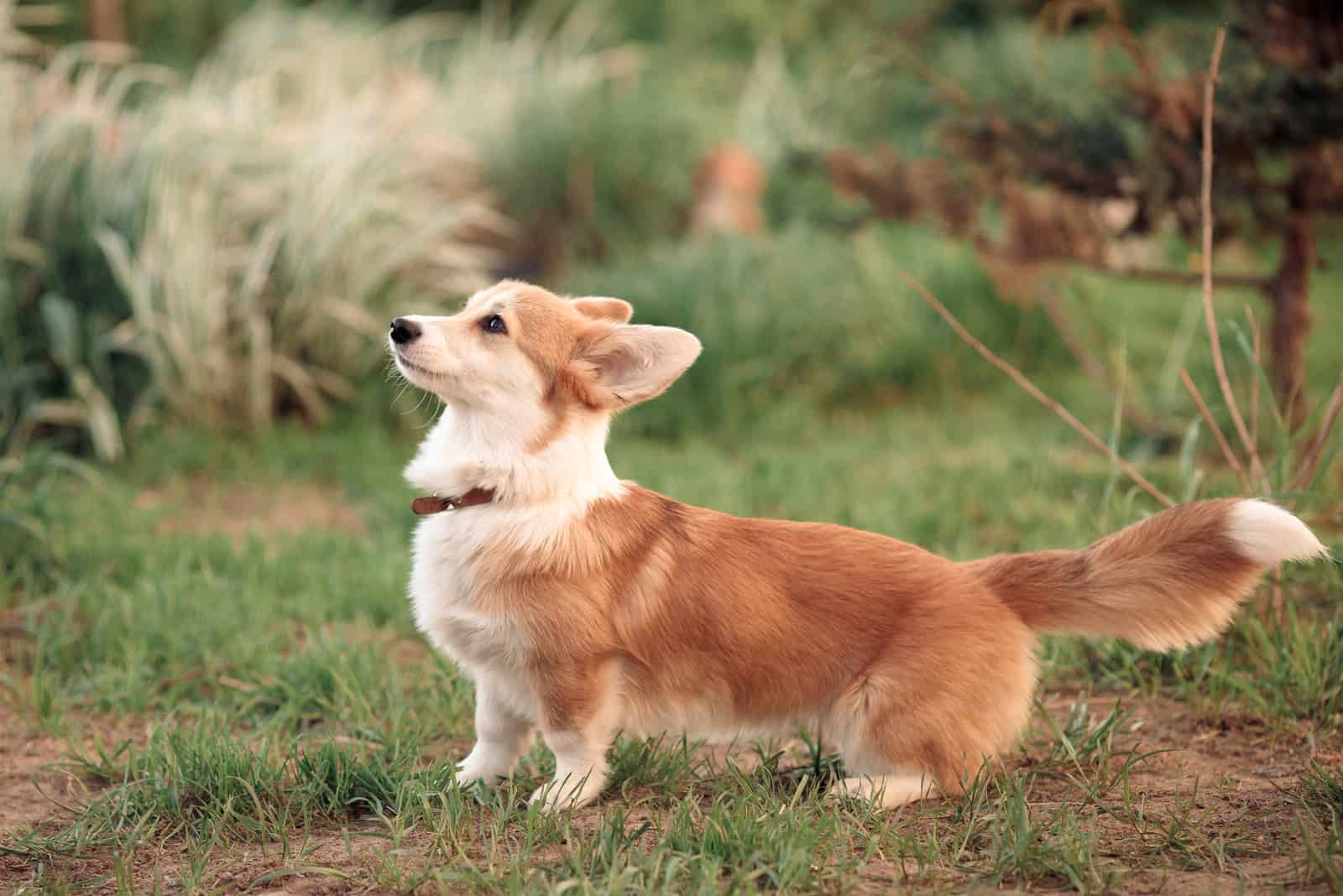
A neutral position shows that the dog simply hasn’t made up its mind yet about a situation. This tail position is often seen in dogs that are introduced to new environments, new dogs, and new people. If your dog could talk, it would probably say, “Hmm, I’m not really sure about this.”
A dog’s tail in mid position indicates curiosity, attentiveness, and indecisiveness. The tail isn’t stiff as it is when it’s tucked between the dog’s hind legs.
Usually, a neutral position with slow wagging suggests that the dog is either curious, nervous, or both! I would like to call this wag the “curious wag” or the “nervous wag”.
The difference between these two is which side the tail wagging is directed to.
Slow tail wagging towards the left usually shows that the dog is feeling nervous. On the other hand, tail wagging towards the right indicates curiosity and excitement.
A neutral tail position in dogs is often followed by wide eyes, lifted ears, and its head held high. What this means is that the dog is most likely focused on whatever it is in front of it.
Tail High
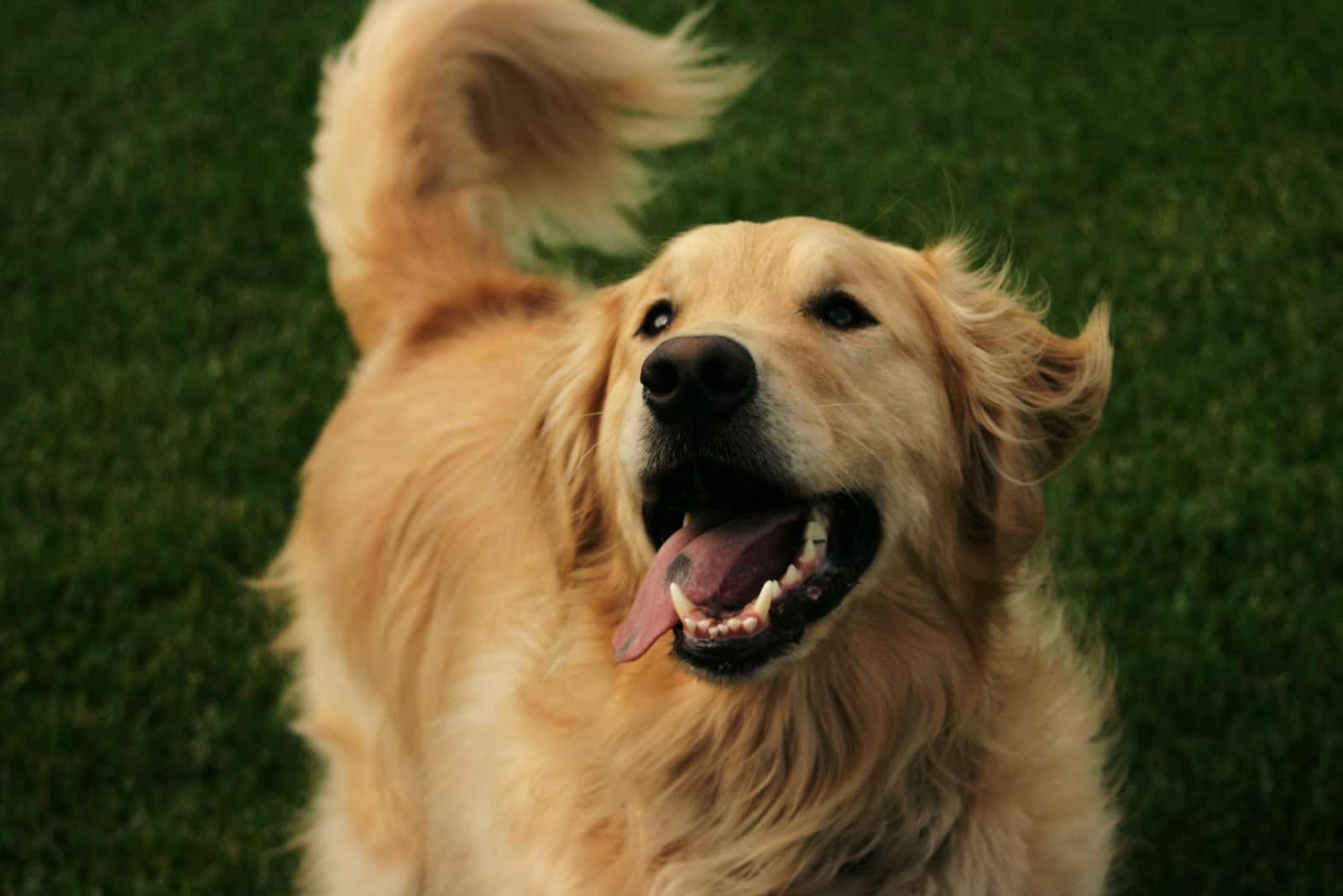
Although this is usually a good sign, a dog’s tail held up high can indicate two completely opposite emotions.
So, why is a dog’s tail up?
First, let’s talk about the dog’s tail going up from the neutral position. A dog’s tail that is slightly lifted up and followed by slow or fast wagging shows excitement, happiness, and curiosity.
In this case, a dog has its ears perked up, its eyes wide open, and sometimes its tongue sticking out! This is nothing more than one very happy dog.
Excited Tail Wagging
Every person who has met a dog in their life knows the feeling of a happy dog’s excitement. I personally go crazy whenever an excited pooch approaches me! It seems that so much happiness can’t entirely fit into a dog’s body, so it bursts out through its tail.
A happy dog will move its tail fast in both directions. Alongside fast tail wagging, its whole body will be shaking with joy. Some happy dogs might even jump in place, run around, or roll over.
Happy dogs are all over the place with their endless tail wagging. When you look at their face, you can see that they’re bursting with energy and excitement. Their eyes are usually wide open, and their ears are erect.
This kind of dog behavior is commonly seen in young dogs and puppies that never seem to calm down!
So far, we know that fast tail wagging normally suggests happy feelings, whereas slow wagging usually indicates a laid-back attitude.
However, excitement doesn’t always have to be positive.
Aggressive Tail Wagging
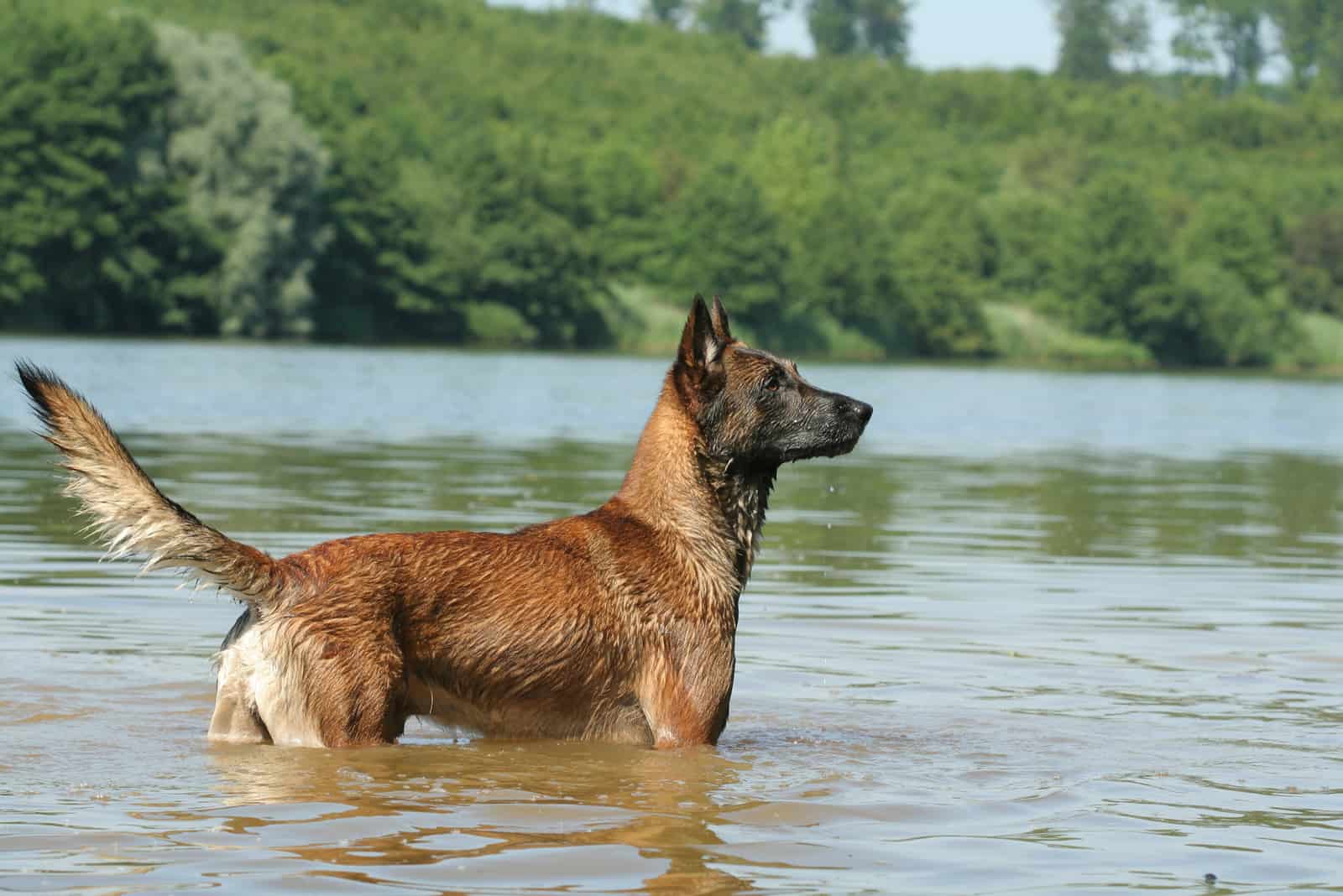
When a dog’s tail is held up high, pointed, and curved towards its head, it shows the dog’s aggressive behavior. Such tail position is usually followed by fast wagging and barking. If tail wagging gets faster, the dog is getting angrier.
With its ears pointed high up and its eyes wide open, the dog is fully focused on its threat. Sometimes, you might even notice that the dog’s teeth are showing as it’s growling at nothing.
Aggression doesn’t necessarily have to be expressed through intense emotions. A dog’s stiff tail and strong eye contact, followed by slight quivering in the tail and jaw, is enough to know that one should not mess around with this pooch.
Whatever the cause, such a riled up canine may bite during interaction. Therefore, it’s very important to know how to read a dog’s aggressive behavior. Such behavior in dogs can be fixed if you know how to socialize an aggressive dog. This way, you and other pets will avoid potentially getting hurt.
Dogs also like to maintain eye contact when they’re pooping. So, don’t confuse a pooping dog for an aggressive dog.
Happy Tail Syndrome In Dogs
I also want to mention a medical condition called “Happy tail”. This health issue develops after intense tail wagging that just won’t stop. In this case, the dog’s wagging tail keeps hitting nearby objects and the ground, causing nerve damage and bleeding.
Dogs with happy-tail injuries need veterinary care. They usually receive medication and get their tail bandaged.
Despite their injuries, dogs with happy tail syndrome might not stop wagging their tails. In this case, the vet will recommend tail removal surgery.
How Do You Read A Dog’s Tail?
Reading a dog’s tail only requires a few observations.
You can observe your dog’s tail every day. Whether you decide to go for a routine walk or to a dog park, you will notice each of these tail positions in your dog.
It’s best to pay attention to two dogs that are meeting each other for the first time. Pay close attention to both dogs’ tails. You might notice that one has its tail high up, whereas the other one is holding its tail low. You will soon realize that the one holding its tail up is the alpha dog in the pack.
If you are in a dog park, you can watch a pack of dogs playing and running around. You will notice that most dogs have their tail up whenever they are chasing something. This is both due to assertiveness and physical movement in which their tails are used as rudders.
While observing, pay attention to the whole body of a dog. Sure, a dog tail shows a lot of a dog’s feelings, but so does the rest of the body.
Look out for erect hackles across the dog’s back and tail. You know how cats get all fuzzy when they get scared? Well, so do dogs – kind of.
A dog’s hackles are hairs found on its back and tail. Of course, the dog’s whole body is covered in hair, but these hackles are thicker and coarser. Unlike other hairs on the dog’s body, hackles can lift up depending on the dog’s mood.
These hairs are usually erect when a dog is feeling anxious, angry, scared, or nervous.
So, when interpreting a dog’s body language, make sure to pay attention to these little, but important details.
Is Dog Tail Wagging A Learned Behavior?
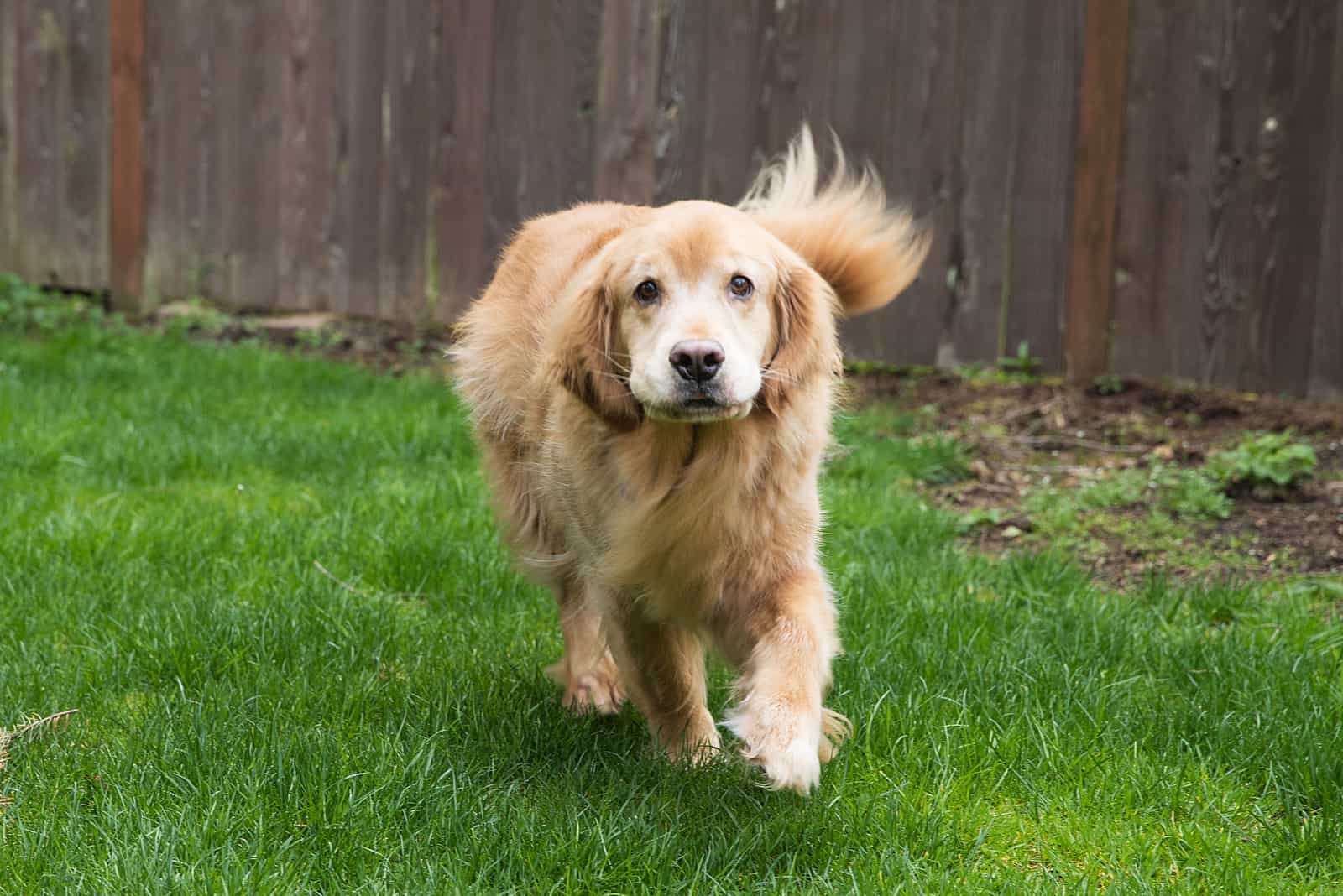
All puppies are born without knowing how to wag their tail. In fact, they don’t even know why their Mom is wagging her tail when she sees her dear humans.
By their first month of age, puppies aren’t aware of what a wagging tail means. This is why some experienced animal behavior ethologists believe that dogs learn to wag their tail during the first two months of age.
In other words, it is believed that dog tail wagging is a learned behavior.
When I heard about this research, I thought to myself, “If tail wagging is a dog’s social behavior, how do puppies that are separated too early from their pack learn to wag?”
Well, dog tail wagging is an instinctive trait as well. What this means is that all dogs are born with this instinct deeply rooted in them.
This leads me to another question I was curious about. Can dogs control tail positions and tail wagging?
The answer is both yes and no.
Dogs are aware of their tail. They voluntarily control their tail muscles, making the tail wag in all directions. But, dogs seem to forget about controlling their tail when they are overwhelmed with emotions.
This is when the above-mentioned instinct comes to light. When they are excited, scared, happy, or sad, all dogs position their tail in a certain way without controlling the movement. This is described as an involuntary response to an external or internal stimulus.
Why Do Dogs Have A Tail?
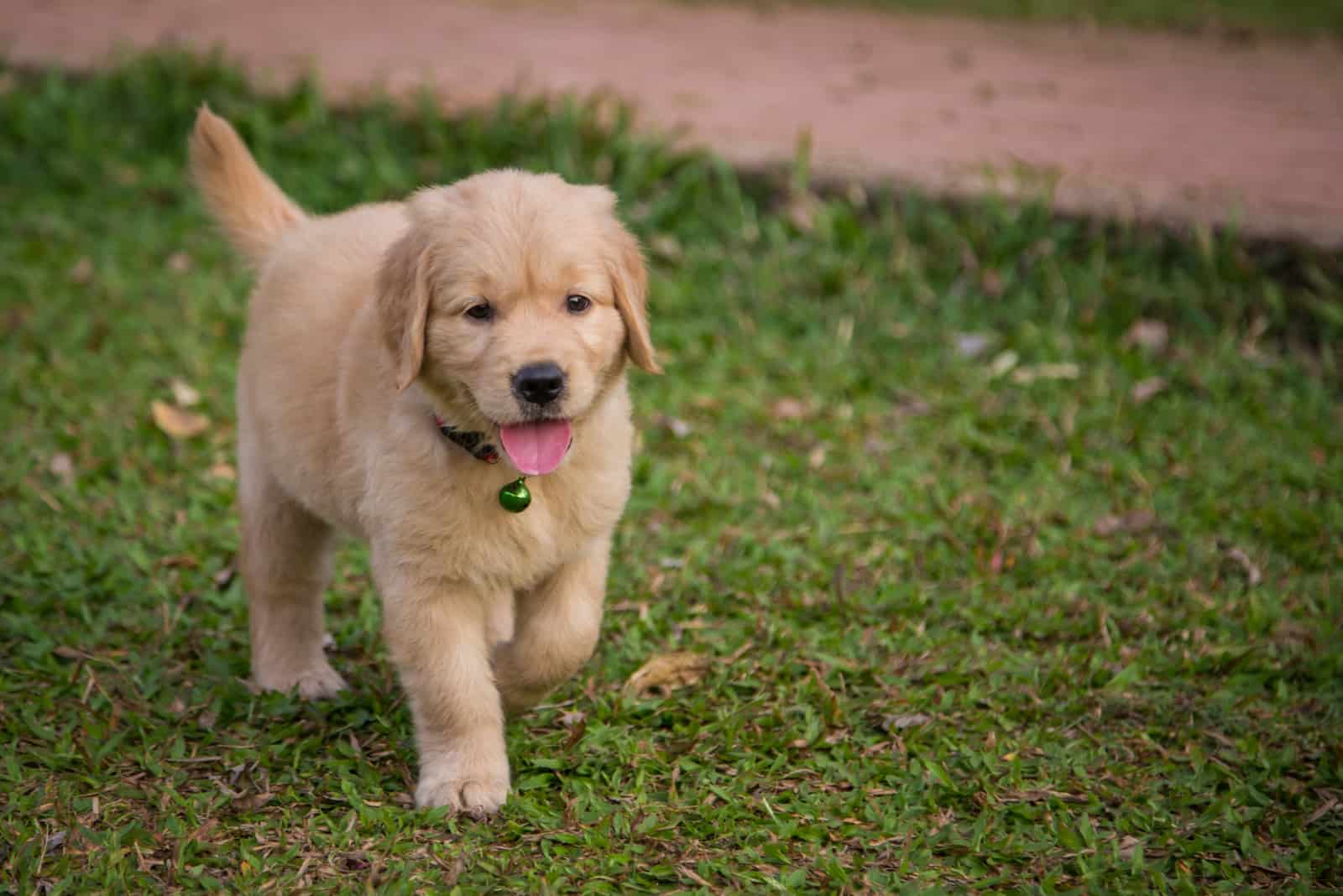
Now that you know the physiology behind dog tail wagging, you surely got a hint of why a dog’s tail is an important part of its body. Let’s find out how exactly tails help dogs in their everyday life.
Firstly, a dog’s tail helps it maintain balance. That’s right – a dog’s tail is an important body part that serves as a sensor. Dogs have developed a better sense of orientation thanks to their tails. Whenever a dog is trying to jump, kneel, run, or walk, it uses its tail as a rudder.
Besides navigation, a dog’s tail is used as a steering wheel. During walking or running, a dog’s tail will change direction depending on where the pup wants to go.
You may have noticed that they have an extremely fuzzy tail. Well, that’s because they use this puffy tail to keep them warm during cold winter nights. So, another important role of a dog’s tail is its thermoregulating property.
Different Dog Breeds, Different Tails
You probably noticed that all dogs have a different tail. Long, short, curled, fluffy, bobbed, and tufted — we love them all!
To understand why each dog breed has a different tail, we need to know why these dogs were primarily bred.
For example, companion dog breeds like Pugs, English Bulldogs, and Basenjis have a curled tail. This is a hereditary physical trait where the tail has grown “abnormal” and curled upwards. And, this is perfectly normal. These dogs’ tail wagging is just as efficient as it is in dogs with “normal” tails.
Then, we have the racing dogs. Greyhounds and Whippets normally have their tail tucked between their hind legs. However, this doesn’t necessarily mean that these dogs are frightened and stressed out.
Dogs like Labrador Retrievers and Golden Retrievers are known for their long, thick tail. In fact, all members of the Retriever dog family have inherited “otter” tails. Due to the fact that Retrievers are swimming dogs, such tails are used as rudders. They also aid in keeping the dog closer to the surface.
Other dog breeds that stand out with their majestic tail are dogs like the Siberian Husky and the Alaskan Malamute. Their fox-like tail is used as a fluffy blanket in which they curl up in order to keep themselves warm.
What About Dogs That Don’t Have A Tail?
Some dogs are born without a tail, whereas some have their tail docked. A tailless dog doesn’t behave any differently than one that has a tail. In fact, some bobbed-tail dogs show better performance than those with a tail.
Tail docking in dogs is preferred in certain dog breed standards. For example, most Rottweilers have their tail docked, and you don’t see these dogs having many health issues. This procedure is usually done to reduce potential tail injuries in working dog breeds.
But, dogs with a docked tail may have difficulty communicating with humans. However, dogs have other ways of communication between themselves.
Final Thoughts
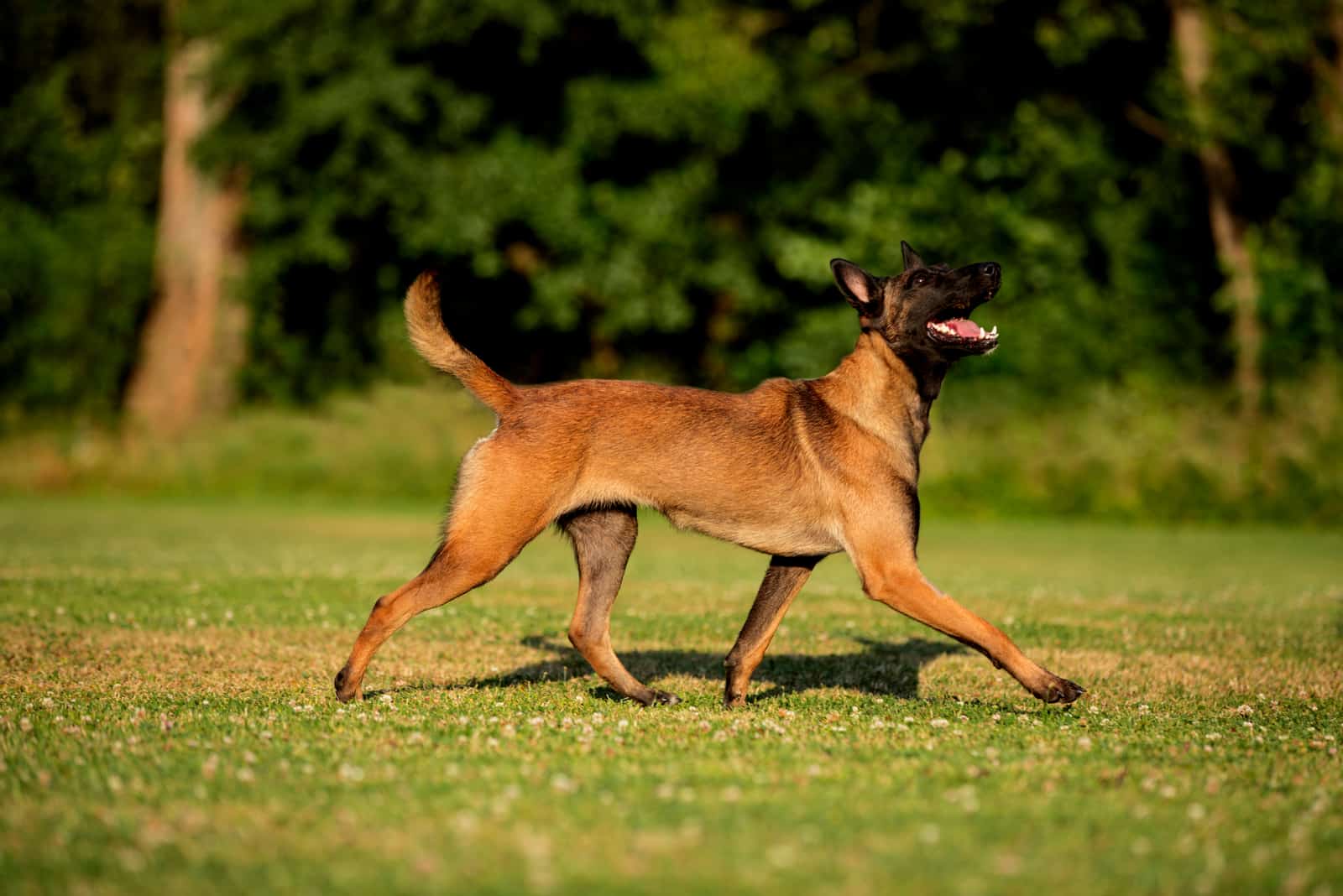
Dog behavior is an extremely broad subject. To this day, researchers haven’t been able to decode some dog behavior patterns.
However, a dog’s tail positions have been helpful in getting the right answers. Throughout time, scientists have figured out what dog tail wagging means. So, today, we are able to read a dog’s behavior thanks to these clues.
This dog tail position chart is an excellent tool for all dog lovers who want to understand these wonderful creatures better.
We hope that this article has helped you understand a dog’s body language, specifically what a dog’s wagging tail means.
Remember, each dog is unique. To understand its body language, it’s important to observe each dog individually. Don’t worry – you will get the hang of it in no time!
We wish you to stay as happy as a dog with two tails!
Related Content
• How To Socialize An Aggressive Dog: A Simple Guide For Dog Owners
• Why Is My Dog Barking At Nothing?
• A Dog in Heat: What to Expect From a Female Dog After Mating
• My Puppy Won’t Stop Biting Me, I’ve Tried Everything: 10 Ways To Stop It
